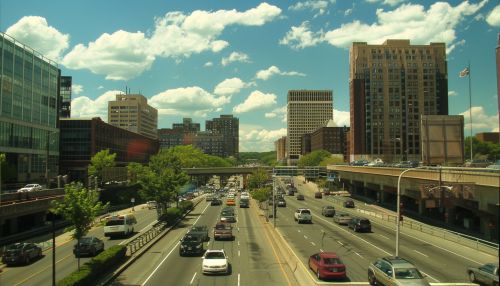Connecticut
Geography
Connecticut, located in the northeastern region of the United States, is part of the collective group of states known as New England. It is bordered by Rhode Island to the east, Massachusetts to the north, and New York to the west and south. The state, the third smallest in the U.S., covers an area of 5,543 square miles.


Connecticut's geography is diverse, characterized by rolling mountains, rural landscapes, suburban areas, and urban centers. The state is divided into two main regions: the "upland" and the "lowland". The upland region in the northwest is part of the Appalachian Mountain system, which includes the Berkshire Mountains and the Taconic Mountains. The lowland region, also known as the Coastal Lowlands, is characterized by flat terrain and sandy beaches along the Long Island Sound.
History
The history of Connecticut dates back to the early 17th century when Dutch fur traders, led by Adriaen Block, were the first Europeans to explore the region. However, the first major settlements were established by the English Puritans from Massachusetts, who founded the Connecticut Colony in 1636. The state played a significant role in the development of the federal government of the United States.
Connecticut was one of the Thirteen Colonies that revolted against British rule during the American Revolution. The state is known as the "Constitution State", a nickname that pays homage to the Fundamental Orders of 1639. These orders represent what some historians consider to be the first written constitution that established a government.
Economy
Connecticut's economy is diverse, with significant contributions from various sectors such as finance, insurance, manufacturing, and health services. The state is known for its high income per capita and high cost of living. It is home to many large companies, including several Fortune 500 corporations.
The state's economic history is marked by a shift from agricultural to industrial production. In the 19th century, Connecticut was a leader in the manufacturing industry, particularly in the production of firearms, sewing machines, and bicycles. Today, the state's economy is more service-oriented, with finance and insurance being the largest sector.


Government and Politics
Connecticut operates under the framework of a constitution that was adopted in 1965. The state government is divided into three branches: executive, legislative, and judicial. The Governor of Connecticut serves as the head of the executive branch, while the Connecticut General Assembly and the Connecticut Supreme Court head the legislative and judicial branches, respectively.
Connecticut has a history of political moderation, with a mix of conservative and liberal elements. The state is known for its active civic participation and high voter turnout.
Education
Connecticut has a strong commitment to education, with a public school system that is often ranked among the best in the nation. The state is home to several prestigious higher education institutions, including Yale University, one of the oldest and most respected universities in the United States.
Culture
Connecticut's culture is a blend of New England traditions, cosmopolitan style, and contemporary influences. The state has a rich literary history, being the birthplace of notable authors like Mark Twain and Harriet Beecher Stowe. Connecticut is also known for its contributions to the culinary world, with local specialties like the New Haven-style pizza and the lobster roll.
